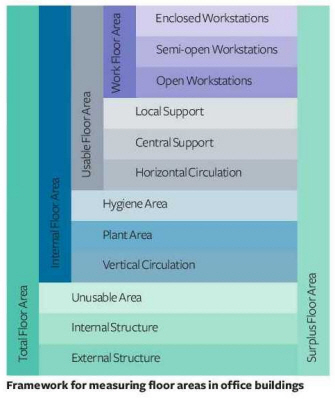Code call
Huge cost savings are to be made by intelligent use of workspace. And this protocol could prove useful to FMs in their decision making process
by Hermen Jan van Ree
Space optimisation has been catapulted to the top of the real estate and facilities management agenda, as operating expenses, staff productivity and environmental performance of buildings make the headlines.
IPD Occupiers’ latest annual survey of large occupiers shows that more intelligent use of space is the primary means of contributing to enhanced efficiency and effectiveness. Our own data indicates that at least 75 per cent of potential costs savings in a typical estate come from space optimisation. In fact, it is the fastest way to simultaneously cut costs and reduce environmental impact without reducing the quality of the workplace.
|
|
Consultation with leading occupiers and key industry organisations has highlighted that existing space measurement standards do not provide enough granularity and detail to be of optimal use to end-user organisations. In addition, real estate and facilities management executives for global companies often encounter difficulties when comparing property performance across regions.
The recently launched IPD Space Code — in association with Johnson Controls and EDF Energy — aims to tackle both problems in one go. By providing the right amount of granularity, space measurement data from different countries becomes easier to interpret and data comparisons are more likely to be accurate. By providing more detail, end-user organisations are allowed a better understanding of the way they use ‘people space’ in their buildings.
The IPD Space Code is the essential starting point for property executives charged with addressing the spatial implications associated with an estate. With a robust set of baseline spatial data in place property professionals can:
- Gain clarity on space use in the buildings we use and occupy
- Create space performance targets and track progress
- Support decision-making on space usage and allocation
- Accurately and confidently communicate spatial improvements
- Enable benchmarking against other organisations
By aligning a wide range of country-specific space measurement standards, IPD Occupiers created a unifying global framework for measuring floor areas in office buildings. By providing the right amount of granularity, the framework can be applied to both national and international levels at the same time.
– At least 75% of cost savings in a typical estate come from space optimisation
– The IPD Space Code will tackle poor space measurement standards and improve comparability across regions
The primary space measures for international comparison and benchmarking are: Total Floor Area, Internal Floor Area, Usable Floor Area, and Work Floor Area. As for the 12 secondary space measures from External Structure up to Enclosed Workstations, the bottom six measures are statutory and/or given by the building, the top six measures are ‘flexible’ and in most cases up to the occupier of a building. Next to these secondary space measures, we added Surplus Floor Area, which is to be measured separately.
Objective comparisons and subsequent realistic targets can only be made when spatial data is put in context. Therefore it is important to collect contextual data on the property itself, its users and the workstations. Once all relevant data has been collected and analysed, we recommend using at least the following space ratios:
- Usable Floor Area / Workstation
- Workstations / FTE (or headcount)
- Usable Floor Area / FTE (or headcount)
With space optimisation being the most intelligent way to simultaneously reduce occupancy costs and environmental impact, without compromising the quality of your output, this performance measurement standard couldn’t have come at a better time. Ian Fielder, CEO of the BIFM agrees: ‘Any protocol that gives clarity on space usage in the buildings we use and occupy and supports effective decision-making on space usage and allocation must be good for the professional and the economy. The BIFM welcomes another important aspect of a standardised measurement protocol in that true benchmarking will be made easier across borders, encouraging cost effectiveness and best practice.’
A free copy of the IPD Space Code can be downloaded at www.ipdoccupiers.com/spacecode.
Hermen Jan van Ree is head of research and development at IPD Occupiers
